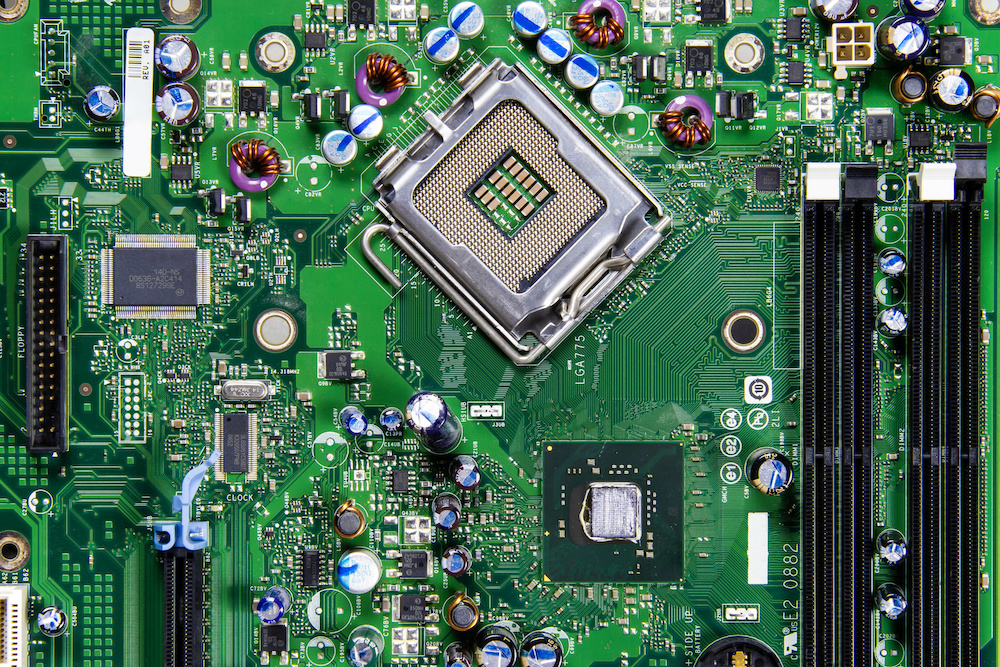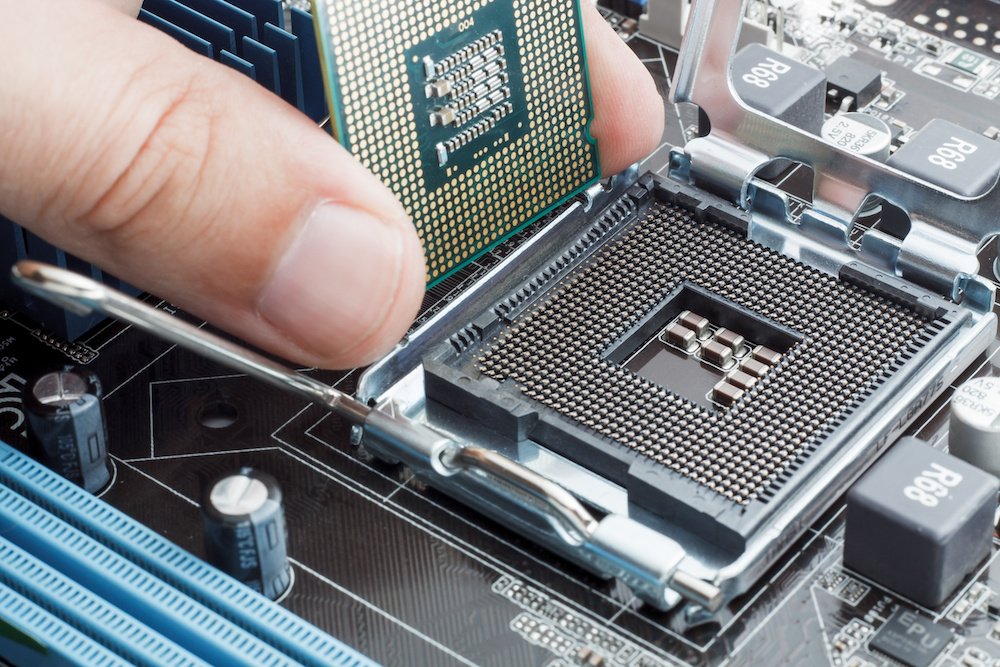Do All Motherboards Have WiFi: A Detailed Guide
We may earn a commission for purchases using our links. As an Amazon Associate, we earn from qualifying purchases.
In your quest for the best motherboard for your PC, you must be hungry for the latest technologies and capabilities that newer models have.
You’re probably wondering, do all motherboards have WiFi?
Or, do they offer Bluetooth connectivity?
You might also wonder if your existing motherboard has built-in WiFi.
In this post, we dig deeper into the WiFi capabilities of motherboards, their advantages, and their limitations.
Motherboards and WiFi Connectivity
The motherboard is one of the most crucial components of a highly functioning computer.
Primarily, it allows the CPU, graphics card, hard drive, and memory to receive power from the supply source.
It also ensures that all the other components in your computer are working together.
If you're familiar with building computers, then you must know that the motherboard is a major factor to consider when determining the rest of your hardware components.
Thus, choosing the perfect motherboard will benefit you in the long run.
ALSO READ: Do Motherboards Come With WiFi?
Is Built-in WiFi on the Motherboard Good?
While WiFi connectivity is more like an added feature for motherboards, it does have some advantages.
The decision to choose a motherboard with WiFi boils down to your needs, although it is bound to favor you in the future.
Why Would You Want a Motherboard With WiFi?
Motherboards with WiFi eliminates the need for a wireless adapter or extra hardware to connect to a WiFi network or router.
It's most beneficial for users whose PCs are stationed far away from the router or wherein using antennas will give them a few meters of additional range.
Are Motherboards With WiFi Good?
Today’s motherboards are more powerful, functional, and geared towards reduced power consumption.
They have enough ports to plug different hardware components or peripherals together, as well as high-quality chipsets.
WiFi connectivity is among the newer technologies or features seen in motherboards.
It isn’t a must-have because you can always connect to a wireless network without this function.
Still, this added feature comes with several benefits.
Below are some of them:
- No Need for WiFi Connectors
Built-in WiFi can provide a more stable ethernet cable connection.
It's generally better than a USB stick, and its performance is comparable to that of a PCI-e card.
- No Need for WiFi Cards
You also don't have to buy a separate WiFi card if you're using a motherboard with integrated WiFi.
- Bluetooth Connection
Another advantage of choosing motherboards with WiFi is that these models often come with Bluetooth connectivity.
If you find USB dongles extra inconvenient, a motherboard with WiFi and Bluetooth saves you the hassle.
- High-End
Motherboards with WiFi typically belong to the high-end spectrum.
Lower-end models don’t support this feature because it takes higher specs and better quality build to integrate more slots and features into your board.
Otherwise, your motherboard will burst into flames when you start using your computer.
That said, another major benefit of motherboards with WiFi is that they are generally superior in terms of quality and functionality.
How Do I Know if My Motherboard Has WiFi?
Maybe you just purchased a high-end motherboard recently, but you're not sure if it supports WiFi.
The easiest and quickest way to check if a board has built-in WiFi is to look at the I/O panel at the back.
This is where most of the ports are connected, from your USB ports to the audio ports, and HDMI or DP ports.
There, you can check for antenna connectors.
It's very rare for a motherboard with WiFi not to have antennae.
How do you know which is the antenna? It's usually easy to spot.
If you see two gold prongs on the left side of the I/O panel, that's it.
They are two visible gold caps screwed between the motherboard itself and an insert.
Again, this feature is only available in higher-end models, such as an mITX board at least.

What Do I Do if My Motherboard Doesn’t Have WiFi?
If your board doesn't have built-in WiFi, you have two other options to connect to wireless internet.
USB Adapters
A USB wireless adapter is as simple as it gets.
You simply plug it into the USB port of your computer, download certain drivers, and you can then use it to access a WiFi network.
Convenience is the biggest single advantage of using a USB wireless adapter.
It only takes a few seconds to transfer it to a computer and the installation or driver update is a no-brainer.
A USB WiFi adapter can be used on a desktop or a laptop.
However, it does have some drawbacks.
Firstly, it is less powerful than PCIe cards.
That's because USB wireless adapters don't pack any external antennae.
This means they won't get as strong reception as PCIe cards.
Many people also report lower internet speeds using USB adapters.
While some newer models of USB WiFi adapters come with a single external antenna, it's still less powerful compared to PCIe cards that often have at least three antennae.
If you have a clear line between the adapter and the router, getting a good WiFi speed won't be an issue.
Peripheral Component Interconnect Express
Every desktop computer has several PCIe (peripheral component interconnect express) slots in its motherboard.
These slots can be used not only for WiFi cards but also for GPUs (aka video cards), SSDs, and other add-on cards.
A PCI or PCI Express (PCIe) can significantly boost the strength and connection of your WiFi connection, although it isn't always a guarantee as there are other factors involved.
Compared to USB WiFi solutions, a PCIe wireless adapter is likely going to give you better reception.
Once installed into your motherboard, this device will give you more networking power.
Most PCIe adapters are packed with three antennas, each of which is going to boost the transmission of WiFi signal into your computer.
However, unless you're familiar with building a PC, adding a PCIe to your motherboard can be quite scary.
Also, once you install it on your board, it won't be easy to move it to another PC.
Another drawback of using a PCIe adapter is that placing the antennas between your computer case and the wall can hinder the signal reception.
Even though the antennas are powerful, putting metal in between them and your WiFi source can degrade its performance.
An alternative to PCIe is an M.2 WiFi card.
This device establishes a connection with your modem or router.
If your board doesn't have a PCIe slot, then it most likely has an M.2 slot.
How To Choose a Motherboard With WiFi
With a built-in WiFi in your motherboard, you're less likely to experience an interruption in your internet signal, which is often a source of frustration when you're in the middle of a game or a virtual meeting.
Motherboards aren't created equal, though.
Below are some suggestions to help you find the best motherboard with WiFi capabilities.
Check the WiFi Specs
Most motherboards with WiFi offer the support for dual-band WiFi or the WiFi 5 GHz.
It's a short-range, home networking system that offers an average connection.
Since it has a short range, though, it can only cover a limited distance.
In addition, the reception won't be as good when it's penetrating through solid objects, such as in the case of a CPU cover.
If your primary focus on buying a motherboard is the integrated WiFi, it's best to look for models that support WiFi 6.
It's the latest WiFi technology, also known as AX WiFi.
This WiFi connection has increased efficiency and lower congestion in settings where there's massive bandwidth usage.
For example, if many people are using the same WiFi connection in your home, WiFi 6 ensures that each user still gets an adequate and reliable internet connection on their device.
Check the Other Features
Don’t forget to check the other specs as well. Make sure the board can support your CPU and GPU.
You want to achieve a balanced build where all components won't bottleneck each other.
Some other key features to look at are the following:
- RAM and SSD Slots
If possible, go for boards with four or more RAM slots and dual-channel support that accommodates future expansions or upgrades.
They should also support overclocking in case you decide to do it.
- Chipset
Typically, a chipset with a higher version number is the latest one.
It suggests that your board has all the latest features and options you want for your mainboard.
Choose an Intel chipset if using an Intel CPU or an AMD chipset if using an AMD CPU.
Check for Warranty
A motherboard is an investment, so always choose a high-quality board with a good cooling system and superior build.
Many great-quality models come with a three-year warranty, at the least.
RELATED: What Is a WiFi Motherboard? (Guide)
Do All Motherboards Have WiFi: In Conclusion
Do all motherboards have WiFi?
No; in fact, most motherboards in the market don’t have this feature.
WiFi integration is only available in higher-end models, such as those used in gaming and other applications where a stable internet connection is necessary.
Built-in WiFi isn’t a must-have since you can always connect to the internet using USB wireless adapters or PCIe adapters.
Still, motherboards that come with it offer additional support to help deliver a constant and reliable connection to your computer.
Lastly, these motherboards are usually packed with other high-end features, which can help substantially improve the overall performance of your computer.

